Rust Programming
Network Programming and File Handling
Introduction to Network Programming in Rust
In this lesson, we delve into the fascinating world of network programming using Rust. If you've ever wondered how computers communicate over networks or how you can create your own server, this guide offers an excellent starting point. Let’s first understand what network programming is all about.
Network programming involves writing software that enables computers to exchange data over networks—be it the internet or local area networks. This data exchange can cover tasks such as sending files, retrieving webpages, or streaming videos. In essence, network programming
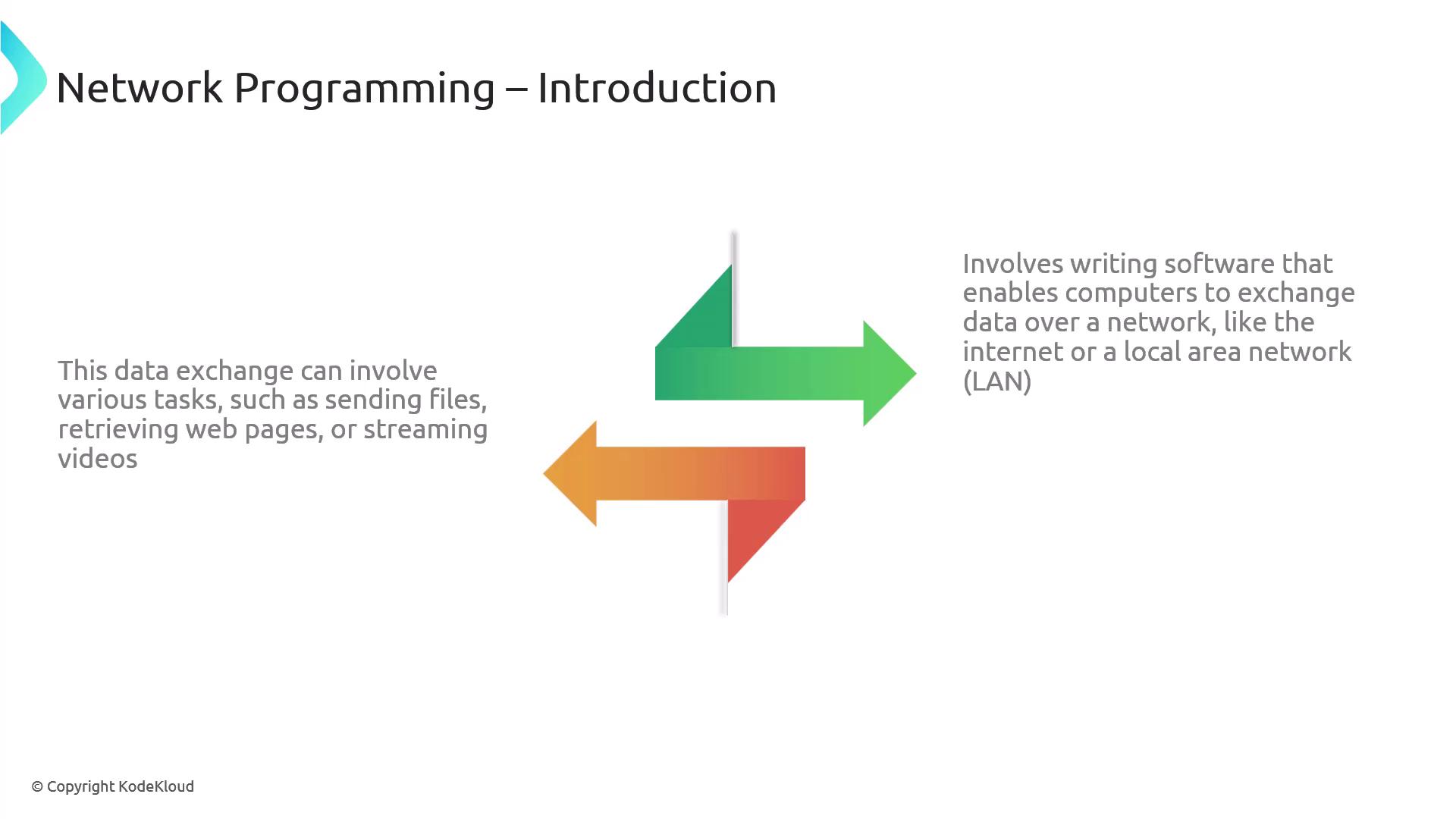
allows various devices to communicate, share information, and resources seamlessly. Communication can occur between client and server or even among peer devices.
Network programming is fundamental for several reasons:
- It facilitates connectivity, which is the backbone of the internet and other networks.
- It supports data exchange between disparate systems, enabling applications like web browsers, email clients, and streaming services.
- It provides remote access to resources such as cloud storage or remote desktop applications.
- It helps build scalable applications capable of handling many simultaneous connections—a necessity for modern web services.
![]()
From social media platforms to online banking and multiplayer games, the influence of network programming is ubiquitous.
Overview of Network Protocols: TCP and UDP
To appreciate network programming, it is essential to grasp the two primary network protocols: TCP and UDP. These protocols establish the rules for data formatting and transmission over a network, ensuring that any information sent is accurately interpreted by the recipient.
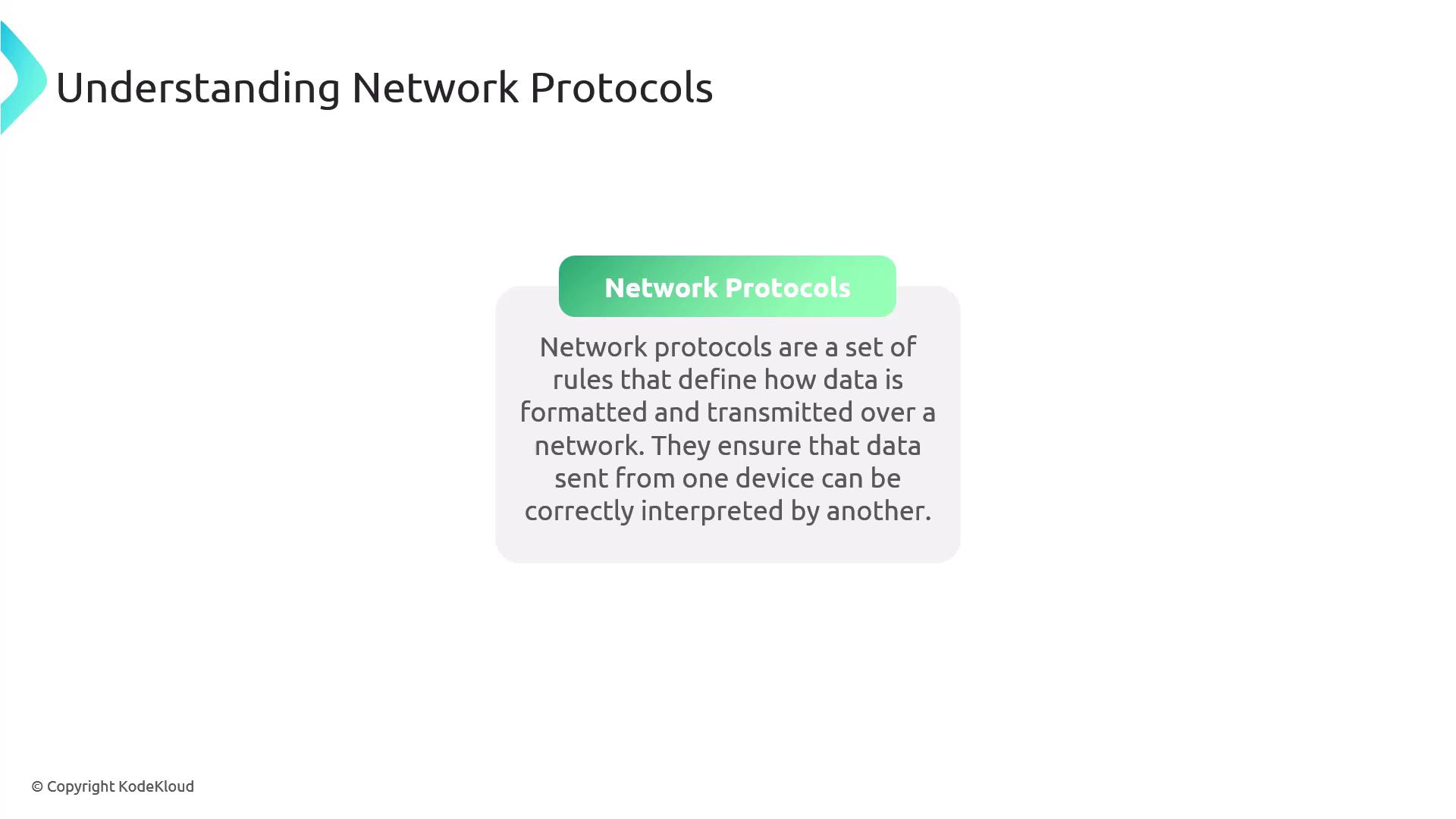
The two key transport layer protocols are:
- Transmission Control Protocol (TCP)
- User Datagram Protocol (UDP)
Transmission Control Protocol (TCP)
TCP is a connection-oriented protocol, meaning it creates a reliable connection between a client and a server before data is exchanged. Think of it as establishing a two-way tunnel where data flows securely in both directions. TCP ensures data integrity by:
- Confirming that data reaches its destination accurately and sequentially.
- Retransmitting lost packets to maintain completeness.
- Utilizing error checking mechanisms.
- Implementing flow control and congestion control to adjust the transmission rate based on network conditions.
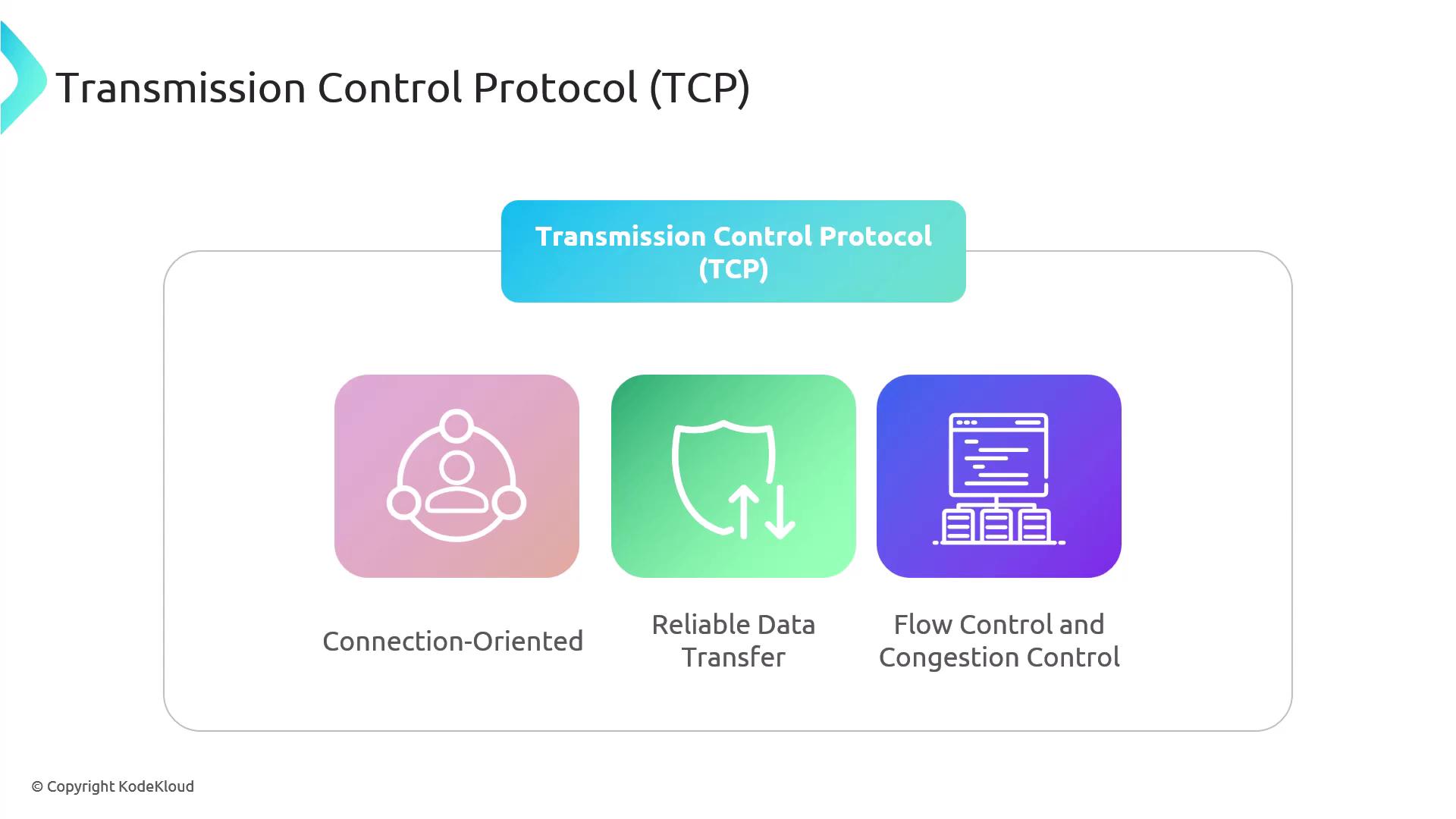
Note
Think of TCP like a phone call where both parties ensure clear communication before proceeding with the conversation.
TCP Connection Process
Handshake Process:
Before any data is sent, a three-way handshake is executed between the client and server. This involves the exchange of synchronization (SYN) and acknowledgment (ACK) packets to ensure both ends are ready to communicate.Data Transmission:
Once the connection is established, data is sent in units called segments. Sequence numbers are assigned to each segment for proper ordering at the receiver's end, which acknowledges each received segment. Lost segments are retransmitted.Connection Termination:
After data exchange, the connection is gracefully terminated using a four-way handshake, ensuring that all data has been received before closure.
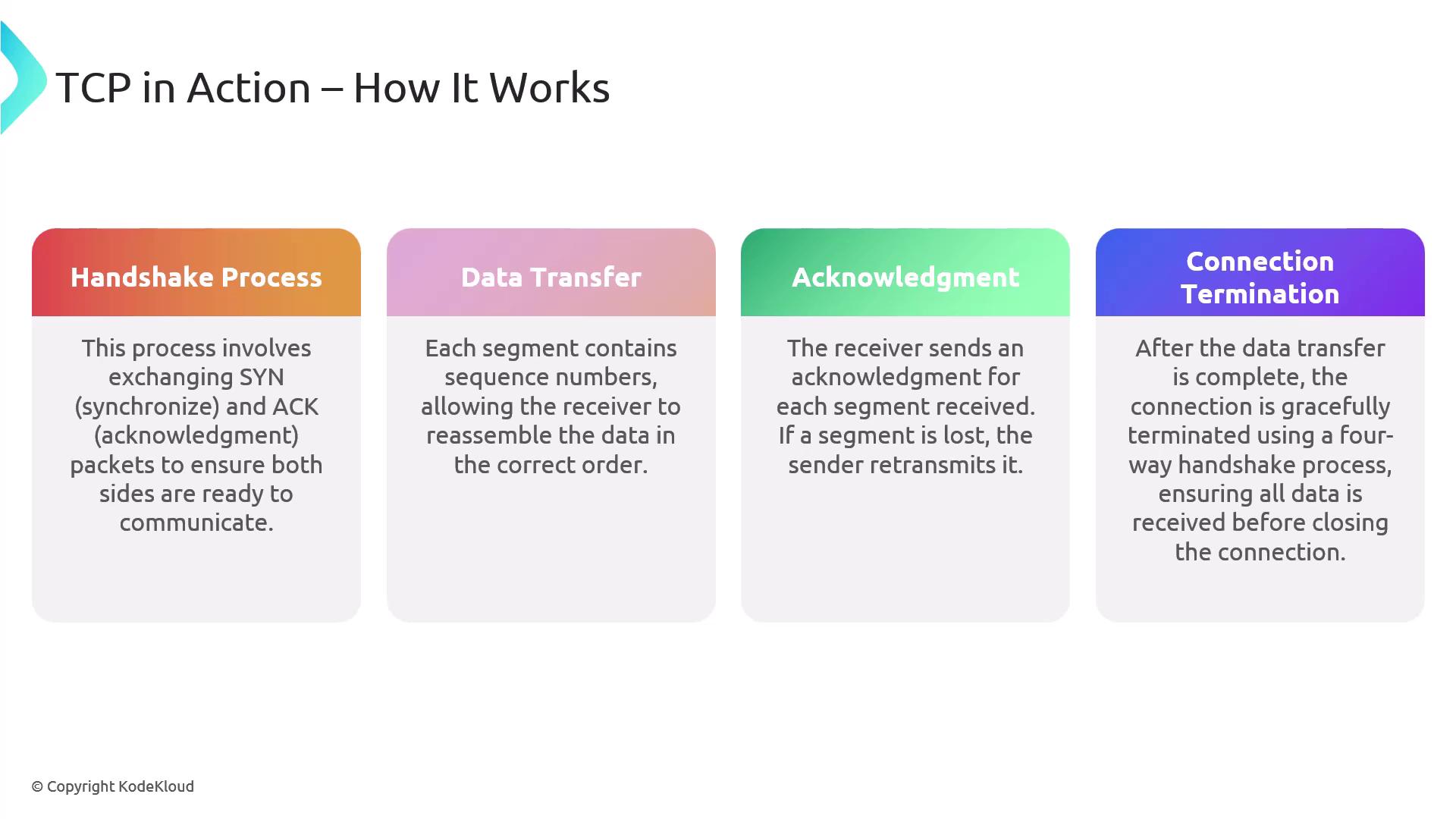
TCP is ideal for applications where data accuracy is paramount—such as file transfers, web browsing, and email.
User Datagram Protocol (UDP)
UDP is a connectionless protocol that sends packets, known as datagrams, without establishing a prior connection. Its design is centered around speed and efficiency. The key characteristics of UDP include:
Connectionless Communication:
No handshake is performed; data is sent immediately, significantly reducing latency.Unreliable Data Transfer:
There is no confirmation of data receipt, no guarantee of order, and no built-in error checking or retransmission.Low Overhead:
The simplified mechanism makes UDP faster, making it ideal for time-sensitive applications.
Imagine UDP as sending a postcard—quick and simple, without assurance that it will be delivered or arrive in order.
How UDP Operates
No Handshake:
Data is transmitted without any initial setup, optimizing for speed.Independent Datagrams:
Each packet is independent, meaning they might arrive out of order or not at all.No Acknowledgment or Retransmission:
Handling of lost packets is left to the application level.Broadcast and Multicast Support:
UDP facilitates sending data to multiple recipients simultaneously; ideal for online gaming, live streaming, and VoIP.
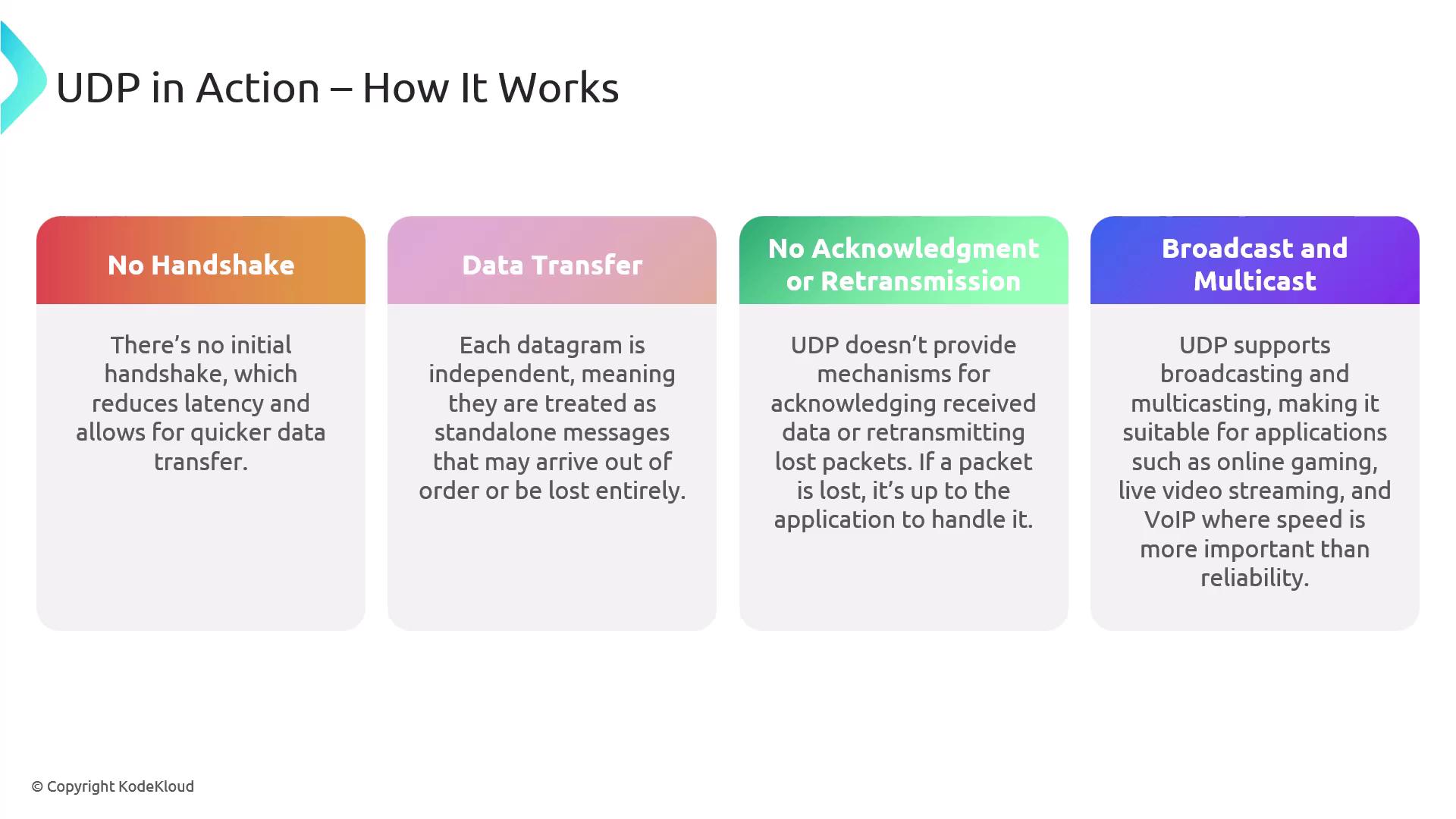
Comparing TCP and UDP
| Protocol | Connection Mode | Data Reliability | Overhead | Use Cases |
|---|---|---|---|---|
| TCP | Connection-oriented | Reliable, guarantees order | Higher due to handshaking | Web browsing, email, file transfer |
| UDP | Connectionless | Unreliable, unordered | Lower, faster | Online gaming, live streaming, VoIP |

TCP is best suited for scenarios where guaranteed delivery and sequential data integrity are critical. In contrast, UDP is optimal when speed is essential and occasional data loss is tolerable.
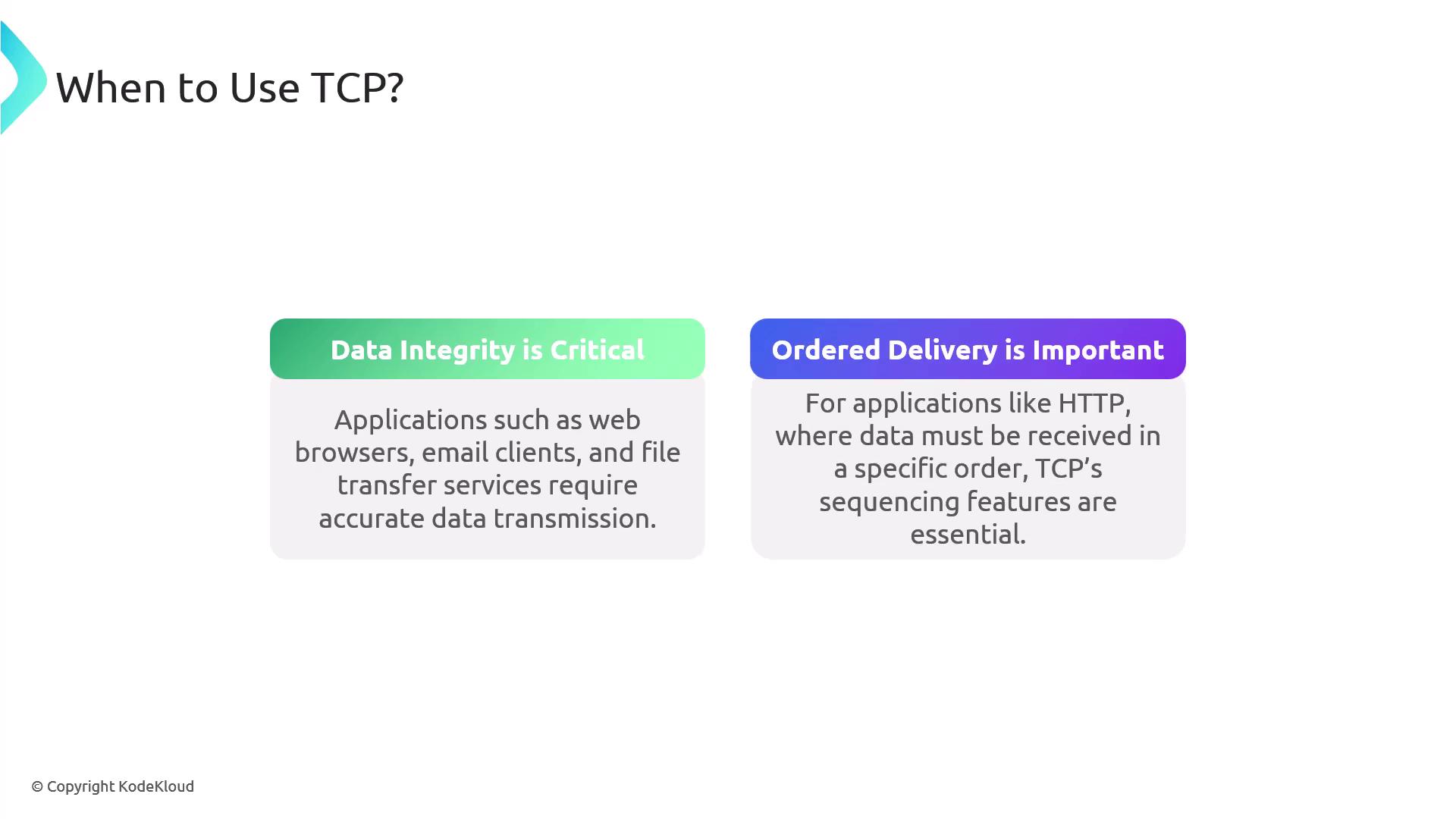
Summary
In summary, choose TCP when data integrity and sequential delivery are crucial, and opt for UDP when low latency and speed are prioritized, even if it means handling occasional data loss.
Watch Video
Watch video content